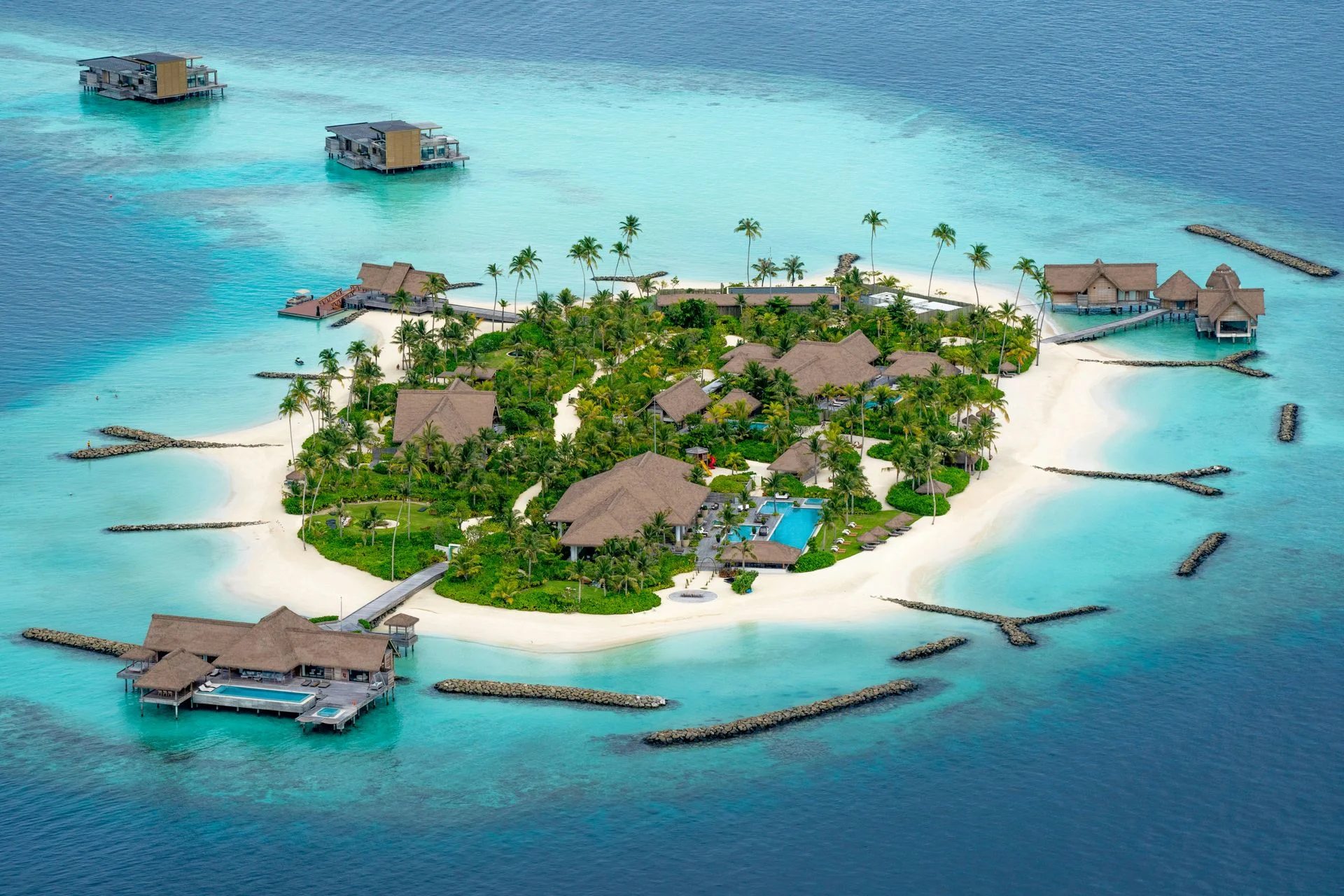Scuba Diving in Maldives
The Ultimate Guide
Scattered across the Indian Ocean like strings of pearls, the Maldives’ 26 atolls encompass more than a thousand low‑lying islands, reefs and sandbanks. Beneath the turquoise surface are channels (kandus), pinnacles (thilas) and lagoons where powerful ocean currents sweep past colourful coral gardens. This nutrient‑rich flow attracts manta rays, whale sharks, reef sharks, schooling jacks, barracudas and every reef fish imaginable. Liveaboards and resort dive centres explore sites such as Okobe Thila and Kandooma Thila in the central atolls, manta cleaning stations in Baa and Ari, and shark‑filled channels like Fuvahmulah in the deep south. Diving here ranges from tranquil coral slopes to adrenalin‑fuelled drifts through current‑swept passes, making the Maldives a true pelagic playground.
Difficulty
Moderate
Temperature
26–30 °C
Visibility
15–30 m

Diving Highlights
Best Months to Dive
Getting to Maldives for Diving
✈️Transportation
International flights arrive at Velana International Airport (MLE) near the capital Malé.
From Malé you’ll transfer by speedboat or seaplane to your resort island or liveaboard, with journeys ranging from 15 minutes to several hours depending on the distance.
Liveaboards often depart directly from Malé.
Country
Maldives
Currency
Maldivian Rufiyaa
Electricity
230 V, 50 Hz, Type G (British) plug
Cost of a Dive Trip in Maldives
Day Trip
Dive Resort
Liveaboard
Meal
Accommodation
Best Dive Sites in Maldives
🐠Maaya Thila (South Ari Atoll)
Maaya Thila is a round pinnacle that rises from 30 m to within 6 m of the surface. It is covered with soft corals and gorgonians and surrounded by white‑tip reef sharks, batfish, trevallies and turtles. Night dives reveal hunting sharks and giant trevally prowling for prey.
🐢Kandooma Thila (South Male Atoll)
A 300‑metre‑long pinnacle with overhangs and caves, Kandooma Thila is known for "Jack Corner" where barracuda, trevally and jackfish whirl in the current. Soft corals cloak the walls and eagle rays and grey reef sharks patrol the drop‑offs.
🦈Hanifaru Bay (Baa Atoll – snorkel only)
A UNESCO Biosphere Reserve famous for manta ray feeding aggregations. Between May and November the bay fills with plankton and dozens of reef mantas barrel roll in the confined space. Scuba diving is no longer allowed, but snorkelers can witness this breathtaking spectacle.
🐙Kuredu Express (Lhaviyani Atoll)
This channel dive offers fast currents and pelagic action. Divers hook onto the reef and watch reef sharks, eagle rays, tunas and stingrays riding the current. The sloping wall is lined with hard corals and schools of fusiliers.
🐚Fuvahmulah Atoll (Deep South)
Isolated in the deep south, Fuvahmulah is a seamount attracting thresher sharks, tiger sharks, hammerheads, oceanic mantas, mobula rays, whale sharks and even mola‑mola. Strong currents and blue‑water descents mean this dive is for advanced divers only.
What Divers Say About Diving in Maldives
Yuki Tanaka
Underwater Photographer / Master Scuba DiverDiving in the Maldives feels like drifting through an aquarium. Warm, gin‑clear water washes you over blooming thilas covered in soft corals while grey reef sharks, eagle rays and swarms of fusiliers cruise past. On the manta cleaning stations you kneel in the sand and watch giants wheel above your head. Night dives bring out hunting nurse sharks and marble rays, and on every safety stop curious batfish and anemonefish hover right in front of your mask. Between dives you lounge on the sundeck of the dhoni, sipping coconut juice and gazing at palm‑fringed islands. Even after dozens of dives the Maldives still manages to surprise you with its diversity and sheer abundance of life.
Frequently Asked Questions About Diving in Maldives
When is the best time to dive in the Maldives?
Diving is good all year, but the dry season from November to May offers calm seas and clear visibility. From May to October the southwest monsoon brings plankton which attracts manta rays and whale sharks.
What marine life can I expect to see?
Expect reef sharks, nurse sharks, eagle rays, manta rays, whale sharks, Napoleon wrasse, turtles, schools of jack and barracuda, as well as colourful reef fish and invertebrates.
Are the Maldives suitable for beginner divers?
Some dives are gentle reefs with little current and suitable for beginners, especially around sheltered thilas. However many channels have strong currents requiring negative entry and drift diving experience, so a few logged dives and comfort in currents are recommended.
How many dive sites are there?
With 26 atolls and hundreds of reefs, there are well over 1,000 named dive sites, though most liveaboards and resorts focus on a dozen or so highlights in each region.
When can I see manta rays and whale sharks?
Manta rays are most common from January to April in the central atolls and from May to November in Hanifaru Bay (Baa Atoll). Whale sharks are spotted year‑round in South Ari but peak during the southwest monsoon.
What are the water temperatures and visibility?
Water temperatures stay between 26 °C and 30 °C. Visibility ranges from 15 m during planktonic months to over 30 m in the dry season.
Do I need to join a liveaboard?
Liveaboards allow access to remote atolls and multiple regions in one trip, while land‑based resorts focus on local sites. Both options offer great diving; choose based on your budget and desire to explore multiple atolls.
How do I get to the dive sites?
Most resorts include daily boat dives on dhonis. Liveaboards depart from Malé or domestic airports and anchor close to dive sites, with tenders dropping divers directly over the reef.